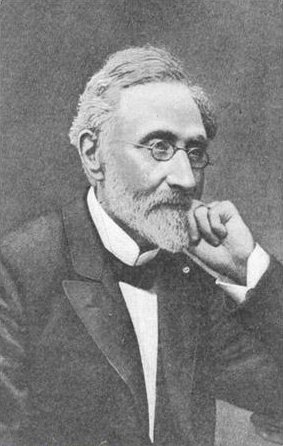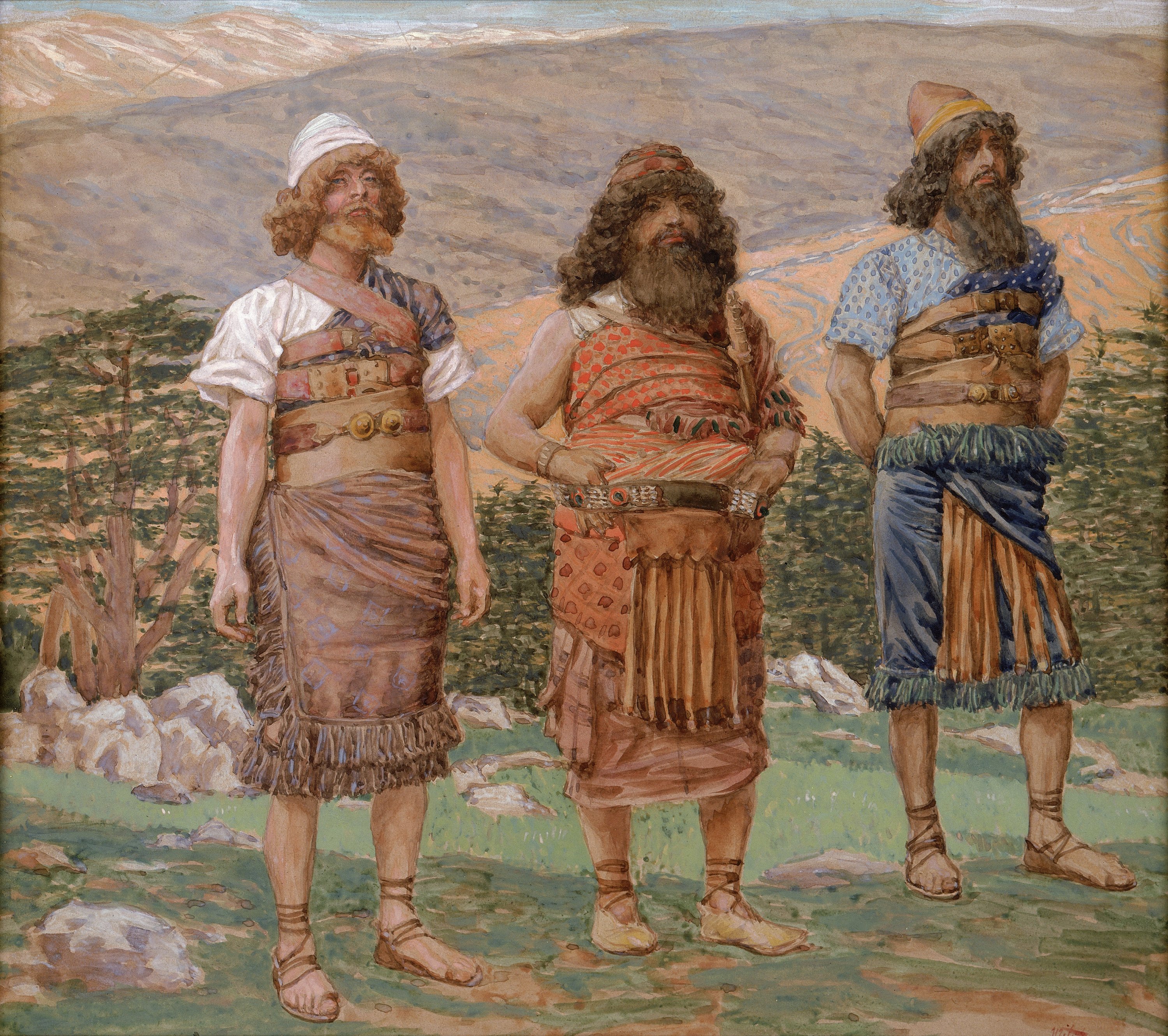|
Ezekiel Katzenellenbogen
Ezekiel Katzenellenbogen ben Abraham (born in Lithuania about 1670; died at Altona, 9 July 1749) was a Polish-German rabbi. At first rabbi at Kėdainiai (Keidani), Katzenellenbogen was called to Altona in 1714. This call he owed to the efforts of Issachar Kohen, an influential member of the Altona congregation; and Katzenellenbogen in return secured the election of Kohen's son-in-law to the rabbinate of Keidani. Jacob Emden, who reports this story in his ''Megillat Sefer'' (pp. 121–140), seems, however, to have been prejudiced against Katzenellenbogen, whom he describes as a man of very low moral character, an ignoramus, and a poor preacher. Ezekiel ben Abraham Katzenellenbogen's descendants for four generations occupied rabbinates in various Polish communities. His epitaph is found in Blogg's ''Sefer ha-Ḥayyim'' (p. 337; Hanover, 1862). He wrote: ''Keneset Yeḥezḳel,'' ''responsa,'' Altona, 1732; ''Tefillot le-Yarẓait,'' prayers and rituals for Jahrzeit, ib. 1727; ''� ... [...More Info...] [...Related Items...] OR: [Wikipedia] [Google] [Baidu] |
Lithuania
Lithuania (; lt, Lietuva ), officially the Republic of Lithuania ( lt, Lietuvos Respublika, links=no ), is a country in the Baltic region of Europe. It is one of three Baltic states and lies on the eastern shore of the Baltic Sea. Lithuania shares land borders with Latvia to the north, Belarus to the east and south, Poland to the south, and Russia to the southwest. It has a maritime border with Sweden to the west on the Baltic Sea. Lithuania covers an area of , with a population of 2.8 million. Its capital and largest city is Vilnius; other major cities are Kaunas and Klaipėda. Lithuanians belong to the ethno-linguistic group of the Balts and speak Lithuanian, one of only a few living Baltic languages. For millennia the southeastern shores of the Baltic Sea were inhabited by various Baltic tribes. In the 1230s, Lithuanian lands were united by Mindaugas, becoming king and founding the Kingdom of Lithuania on 6 July 1253. In the 14th century, the Grand Duchy of Li ... [...More Info...] [...Related Items...] OR: [Wikipedia] [Google] [Baidu] |
Heinrich Grätz
Heinrich Graetz (; 31 October 1817 – 7 September 1891) was amongst the first historians to write a comprehensive history of the Jewish people from a Jewish perspective. Born Tzvi Hirsch Graetz to a butcher family in Xions (now Książ Wielkopolski), Grand Duchy of Posen, in Prussia (now in Poland), he attended Breslau University, but since Jews at that time were barred from receiving Ph.D.s there, he obtained his doctorate from the University of Jena.''Encyclopaedia Judaica'' (2007, 2nd ed.) entry on "Graetz, Heinrich," by Shmuel Ettinger and Marcus Pyka After 1845 he was principal of the Jewish Orthodox school of the [...More Info...] [...Related Items...] OR: [Wikipedia] [Google] [Baidu] |
18th-century Lithuanian Rabbis
The 18th century lasted from January 1, 1701 ( MDCCI) to December 31, 1800 ( MDCCC). During the 18th century, elements of Enlightenment thinking culminated in the American, French, and Haitian Revolutions. During the century, slave trading and human trafficking expanded across the shores of the Atlantic, while declining in Russia, China, and Korea. Revolutions began to challenge the legitimacy of monarchical and aristocratic power structures, including the structures and beliefs that supported slavery. The Industrial Revolution began during mid-century, leading to radical changes in human society and the environment. Western historians have occasionally defined the 18th century otherwise for the purposes of their work. For example, the "short" 18th century may be defined as 1715–1789, denoting the period of time between the death of Louis XIV of France and the start of the French Revolution, with an emphasis on directly interconnected events. To historians who expand th ... [...More Info...] [...Related Items...] OR: [Wikipedia] [Google] [Baidu] |
1749 Deaths
Events January–March * January 3 ** Benning Wentworth issues the first of the New Hampshire Grants, leading to the establishment of Vermont. ** The first issue of ''Berlingske'', Denmark's oldest continually operating newspaper, is published. * January 21 – The Teatro Filarmonico, the main opera theater in Verona, Italy, is destroyed by fire. It is rebuilt in 1754. * February – The second part of John Cleland's erotic novel ''Fanny Hill'' (''Memoirs of a Woman of Pleasure'') is published in London. The author is released from debtors' prison in March. * February 28 – Henry Fielding's comic novel ''The History of Tom Jones, a Foundling'' is published in London. Also this year, Fielding becomes magistrate at Bow Street, and first enlists the help of the Bow Street Runners, an early police force (eight men at first). * March 6 – A "corpse riot" breaks out in Glasgow after a body disappears from a churchyard in the Gorbals district. Suspicion ... [...More Info...] [...Related Items...] OR: [Wikipedia] [Google] [Baidu] |
1670s Births
Year 167 ( CLXVII) was a common year starting on Wednesday (link will display the full calendar) of the Julian calendar. At the time, it was known as the Year of the Consulship of Aurelius and Quadratus (or, less frequently, year 920 ''Ab urbe condita''). The denomination 167 for this year has been used since the early medieval period, when the Anno Domini calendar era A calendar era is the period of time elapsed since one '' epoch'' of a calendar and, if it exists, before the next one. For example, it is the year as per the Gregorian calendar, which numbers its years in the Western Christian era (the Copt ... became the prevalent method in Europe for naming years. Events By place Roman Empire * Lucius Verus, Lucius Aurelius Verus Augustus and Marcus Ummidius Quadratus Annianus become Roman Consuls. * The Marcomanni tribe wages war against the Roman Empire, Romans at Aquileia. They destroy Aqueduct (bridge), aqueducts and irrigation conduits. Marcus Aurelius repe ... [...More Info...] [...Related Items...] OR: [Wikipedia] [Google] [Baidu] |
Benjacob
Isaac ben Jacob Benjacob (January 10, 1801, Ramygala – July 2, 1863, Vilnius) was a Lithuanian Jewish Maskil, best known as a bibliographer, author, and publisher. His 17-volume Hebrew Bible included Rashi, Mendelssohn, as well as his own ''Mikraei Kodesh'' which "emended" the biblical text and helped spread the Haskalah movement. Biography and works Before he learned Russian his parents moved to Vilnius, "and there he received instruction in Hebrew grammar and rabbinical lore."Pending further edits, "Biography and works" is a rewrite of AND THE SINGLE SOURCE for the rest of this Wiki article. Benjacob began to write early, and composed short poems and epigrams in pure Biblical Hebrew which are among the best of their kind in Neo-Hebraic literature. For several years he lived in Riga, where he was engaged in business, always studying and writing in his leisure hours. Later he became a publisher and book-seller and went to Leipzig, where he published his first work, ''Mikta ... [...More Info...] [...Related Items...] OR: [Wikipedia] [Google] [Baidu] |
Shem Ha-Gedolim He-Ḥadash
Shem (; he, שֵׁם ''Šēm''; ar, سَام, Sām) ''Sḗm''; Ge'ez: ሴም, ''Sēm'' was one of the sons of Noah in the book of Genesis and in the book of Chronicles, and the Quran. The children of Shem were Elam, Ashur, Arphaxad, Lud and Aram, in addition to unnamed daughters. Abraham, the patriarch of Jews, Christians, and Muslims, was one of the descendants of Arphaxad. Islamic literature describes Shem as one of the believing sons of Noah. Some sources even identify Shem as a prophet in his own right and that he was the next prophet after his father. Shem is mentioned several times in Genesis 5-11 as well as 1 Chronicles 1:4. In the Bible Genesis 10 Genesis 10:21 refers to relative ages of Shem and his brother Japheth, but with sufficient ambiguity to have yielded different English translations. The verse is translated in the King James Version as: "Unto Shem also, the father of all the children of Eber, the brother of Japheth the elder, even to him were chil ... [...More Info...] [...Related Items...] OR: [Wikipedia] [Google] [Baidu] |
Walden
''Walden'' (; first published in 1854 as ''Walden; or, Life in the Woods'') is a book by American transcendentalist writer Henry David Thoreau. The text is a reflection upon the author's simple living in natural surroundings. The work is part personal declaration of independence, social experiment, voyage of spiritual discovery, satire, and—to some degree—a manual for self-reliance. ''Walden'' details Thoreau's experiences over the course of two years, two months, and two days in a cabin he built near Walden Pond amidst woodland owned by his friend and mentor Ralph Waldo Emerson, near Concord, Massachusetts. Thoreau makes precise scientific observations of nature as well as metaphorical and poetic uses of natural phenomena. He identifies many plants and animals by both their popular and scientific names, records in detail the color and clarity of different bodies of water, precisely dates and describes the freezing and thawing of the pond, and recounts his experiments t ... [...More Info...] [...Related Items...] OR: [Wikipedia] [Google] [Baidu] |
Moritz Steinschneider
Moritz Steinschneider (30 March 1816, Prostějov, Moravia, Austrian Empire – 24 January 1907, Berlin) was a Moravian bibliographer and Orientalist. He received his early instruction in Hebrew from his father, Jacob Steinschneider ( 1782; March 1856), who was not only an expert Talmudist, but was also well versed in secular science. The house of the elder Steinschneider was the rendezvous of a few progressive Hebraists, among whom was his brother-in-law, the physician and writer Gideon Brecher. Education At the age of six Steinschneider was sent to the public school, which was still an uncommon choice for Jews in the Austro-Hungarian empire at the time; and at the age of thirteen he became the pupil of Rabbi Nahum Trebitsch, whom he followed to Mikulov, Moravia in 1832. The following year, in order to continue his Talmudic studies, he went to Prague, where he remained until 1836, attending simultaneously the lectures at the Normal School. In 1836 Steinschneid ... [...More Info...] [...Related Items...] OR: [Wikipedia] [Google] [Baidu] |




